The final area of Grand Portage National Monument is the Historic Gardens. We are not assigned to work in the gardens, but we often help by weeding or watering.
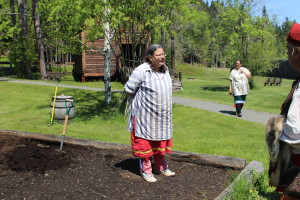
We have a gardener who plans and tends the historic gardens. She spent the first few weeks of June planting and we joked that it took so long because every seed was like a child and it was hard to give it up. Margaret only plants heritage seeds and she plants a lot of different kinds because, she says, she never knows what will feel like growing in any given year.
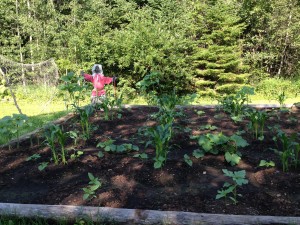
There are two historic gardens. The first is the Three Sisters garden located in the Ojibwe Village. It has corn, beans, and squash. These three items were traditionally grown together because they help each other. The corn is planted first, and when it begins to sprout the beans are planted. The beans are able to grow up the corn stalks and the beans’ nodules return nitrogen to the soil that the corn takes out. The squash is planted last and its large leaves keep the soil cool and moist in the hottest part of the summer as well as discouraging animals from entering the garden. Rabbits and other pests don’t like the hairy leaves of the squash.
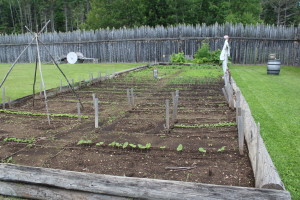
The other garden is our kitchen garden. We take items from this garden to use in the kitchen and it is planted with things that were planted here in the 1790’s. There are six kinds of potatoes: French fingerling, early Ohio, bliss triumph, German butterball, Adirondack red, and all blue. There are three kinds of onions: red Wethersfield, white Ebenzer, and yellow Stuttgarter. There are eight kinds and colors of carrots: dragon purple, lunar white, atomic red, solaris yellow, early scarlet horn, James scarlet intermediate, Manchester table, and Saint Valery. There are beets, rutabaga, turnips, beans, lettuce, radishes, peas, and herbs.
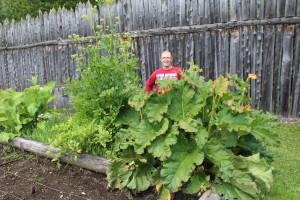
One of the unusual herbs that we have here is lovage. Lovage is a strong herb with a minty, peppery taste. We commonly use it to flavor fish but a little goes a long way.
The gardens grow very fast here because of the long days. I can see the differences between one day and the next. Because they were planted so late, I didn’t think we would be able to see any harvest from the gardens, but now I’m sure we will see vegetables harvested before we leave in September.
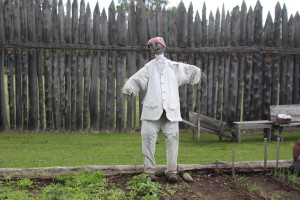
The main pests that bother the gardens are the rabbits and the ravens. Both tend to wait until all the staff have left for the day before they do anything to the gardens. The ravens especially like the beans and peas in the kitchen garden. The rabbits are (so far) sticking to the Three Sisters garden so we need those squash leaves to spread out! We have two scarecrows. Waltzing Matilda guards the Three Sisters and her partner Jacques watches over the kitchen garden. Neither the ravens nor the rabbits seem to be bothered by them.
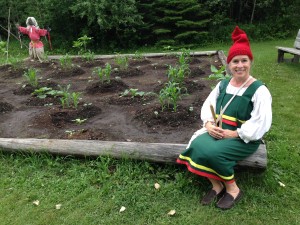
Having the historic gardens gives us another way to connect with visitors. We have talked with people from all over the United States and Canada about heritage seeds and the different kinds of vegetables that are grown as a result. If you are interested in learning more, Margaret recommends Seed Savers.
